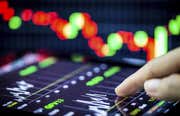
|
Economic profit, otherwise referred to as Economic Value Added (EVAÔ) is a performance metric based on financial theory, making it not dissimilar to free cash flow measures. There are three underlying concepts behind the concept of economic profit:
1. Cash flows are more reliable than accruals.
2. Some short-term expenses are better classified as long-term investments.
3. A company can only create value once a certain threshold level of return has been attained for lenders and shareholders.
When you perform economic profit calculations, remember these things:
1. Economic profit is essentially a set of adjustments which translate accrual-based EBIT into a cash-based NOPAT.
2. There are many potential adjustments to make; however, don’t feel that you need to overextend yourself. So long as you use some of the most crucial adjustments and, especially, that you are consistent from one calculation to the next, you’ll achieve an economic profit calculation which is a strong approximation.
3. Don’t aim for absolute precision when calculating the weighted average cost of capital (WACC). It is difficult to find the cost of equity; it’s far better to charge the company with an approximate but consistent estimate of WACC.
Lastly, if you’re determining whether to make an economic profit calculation, consider these strengths and weaknesses before embarking on this project:
Strengths
1. Economic profit is perhaps the single best performance number, as it contains a huge amount of information. It uses balance sheet data as well as an adjusted income statement.
2. This metric is best served for companies with tangible assets correlating to the market value of assets.
Weaknesses
1. While economic profit is a powerful single metric, it’s always risky to depend upon one single metric when evaluating a company.
2. Some companies, particularly those with assets that are off balance sheet or intangible, are poorly suited to economic profit as a metric.
-
 Investing
InvestingInterpreting a Strategy Performance Report
A strategy performance report can provide key metrics to decide if your strategy is a winner. -
 Investing
InvestingAll About EVA
Looking for a formula to determine whether a company is creating wealth? Time to learn all about economic value added. -
 Financial Advisor
Financial AdvisorKey Metrics to Measure Your Advisory Practice
These key metrics can help financial advisors measure their success. -
 Financial Advisor
Financial AdvisorWorking Capital
Working capital is one of the basic metrics used to evaluate a company's financial health. Find out what it can tell you about a stock and learn how to calculate it. -
 Investing
InvestingEarnings Per Share Explained
Earnings per share is one of the most carefully followed metrics in investing. We show you why this ratio matters and how to calculate it.


